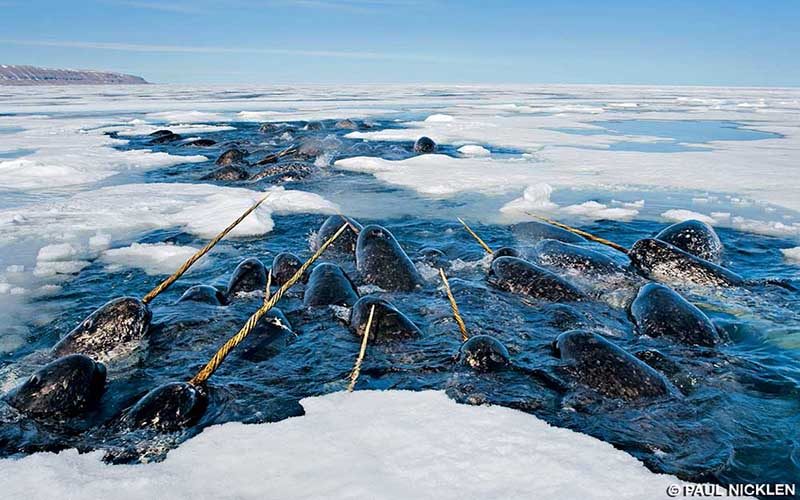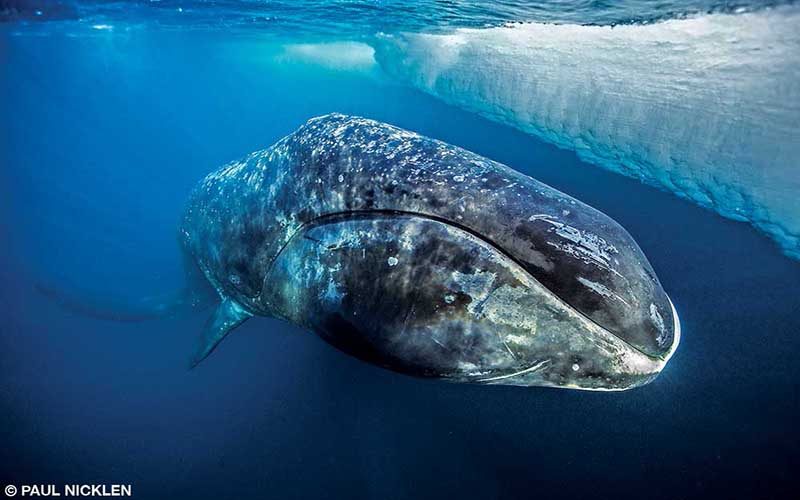The impacts of climate change are no longer simply predictions; we can already see them around the world, perhaps nowhere more dramatically than at the poles. In the Arctic, temperatures are rising at twice the global rate, and the minimum extent of sea ice has fallen 39 percent since 1979. Because polar species have spent thousands of years adapting to their harsh climates, the rapid changes over the past few decades have led to sharp declines in several populations, including polar bears, ivory gulls and beluga whales. Many other species, along with the communities that depend on them for subsistence, are also threatened.
According to the Arctic Council, not only is climate change by far the most serious threat to Arctic biodiversity, but it also exacerbates other threats such as ocean acidification and glacier loss, which affects terrestrial ecosystems. The picture in Antarctica is more complicated: The waters of the Antarctic Circumpolar Current are warming more rapidly than the global ocean, which is a major factor leading to the collapse of ice shelves in West Antarctica. Temperatures on land have been more stable. The ozone hole — a large area of depleted ozone in the stratosphere over Antarctica — has created lower temperatures over parts of the continent, affecting regional weather patterns, while stronger winds and melting glaciers have contributed to an overall increase in sea ice in recent years. This trend, however, is expected to change in the coming decades, to the detriment of ice-dependent species such as the emperor penguin.
Climate impacts add a new set of challenges to fish and wildlife populations that in many cases have already been diminished by overfishing, hunting and commercial whaling. Overall the impacts of climate change that most significantly threaten polar wildlife include the loss of sea ice, ocean acidification and shifting habitats.
Loss of Sea Ice

At the current rate of warming, some climate models predict that summer sea ice will likely be gone from most of the Arctic by 2050, while other models indicate it could happen much sooner. Loss of sea ice affects the growth of algae, which provides the base of the ocean food web. Walruses and seals also depend on sea ice to rest, breed, rear young and feed. The problem is also self-perpetuating: As sea ice diminishes, new areas of the Artic are open for industrial and commercial uses, resulting in further regional environmental impacts.
We can already see several disturbing changes. In some areas, polar bears have been feeding more on birds nesting on the ground and cliffs than on ice, which may lead to local population declines for these species. Seabirds such as black guillemots, which have traditionally fed at the ice edge, are traveling further for food, leading to poorer health and lower breeding success. Walruses are losing opportunities to rest on ice directly over rich feeding areas and are hauling out in coastal areas, which increases the dangers to their young, who are more likely to be injured or killed in stampedes.

Arctic scientists emphasize the importance to local species of the ocean north of Greenland and in northeast Canada, which is expected to be the last area that will be covered by sea ice through the summer. This “last ice area” is an example of refugia — areas that provide the last refuge for species that are increasingly threatened by climate change and other impacts.
On the other side of the globe, Antarctic sea ice has temporarily expanded in recent years due to increased fresh water and stronger winds, but studies predict a loss in sea ice area over the coming decades. Already, the loss of ice shelves and retreat of glaciers in Antarctica have created huge new areas of open water, affecting the structure of the entire ecosystem. Emperor penguins depend on sea ice to support the krill populations on which they feed and to provide a refuge from predators; studies indicate at least 75 percent of emperor penguin colonies are therefore vulnerable to anticipated low sea-ice conditions.
Ocean Acidification
The ocean absorbs about 25 percent of the excess carbon dioxide in the atmosphere, causing chemical reactions that reduce the pH of seawater. As a result, the ocean has become 30 percent more acidic over the 200 years since the beginning of the Industrial Revolution. In some places, acidification is affecting the ability of marine life to form and maintain shells and skeletons; shell-building species are not limited to shellfish and include microscopic animals near the base of the ocean’s food web. Species such as the walrus, salmon and gray whale feed directly on organisms vulnerable to ocean acidification. The problem is exacerbated by the fact that cold waters are naturally low in calcium carbonate — the mineral that forms the shells of many marine organisms — which is further reduced by the acidification process, meaning that shell-building species in polar regions are particularly threatened.

Shifting Habitats
With warming oceans, melting ice and growing acidification, increasing numbers of southern species are moving into Arctic waters. In some cases, they are competing against or preying on native species. Killer whales (orcas), for example, are expanding into Arctic waters, competing with other predators for seals and stressing native populations such as narwhals. Arctic cod — a key food source for seabirds and marine mammals — may be at risk from the current expansion of Atlantic cod into Arctic waters. These shifts are just a few of the more visible examples of how entire food webs in the Arctic and Antarctic are responding to increased fresh water, availability of nutrients, shifting ocean currents and other factors.
What You Can Do
Take action to reduce your carbon footprint and spread awareness about climate impacts. Support initiatives from governments, industries and nonprofit organizations to protect natural areas that store carbon, including coastal “blue carbon” habitats such as seagrasses, mangroves and tidal wetlands. While marine protected areas (MPAs) cannot slow climate change, they can be used to protect those refuges that are experiencing fewer climate-related effects and other threats. You can also encourage actions to protect and conserve marine species and habitats in our polar regions.
Reference
Conservation of Arctic Flora and Fauna (CAFF). Arctic Biodiversity Assessment: Report for Policy Makers. Akureyri, Iceland: CAFF; 2013. Available at: https://www.arcticbiodiversity.is/the-report/report-for-policy-makers. Accessed: June 13, 2018.
| © Alert Diver — Q3 2018 |